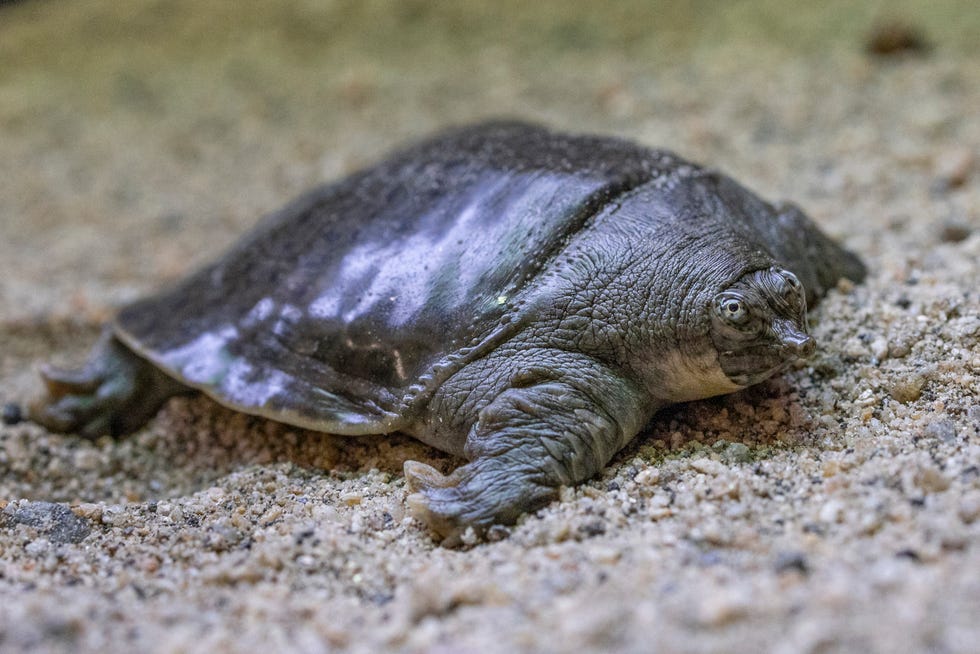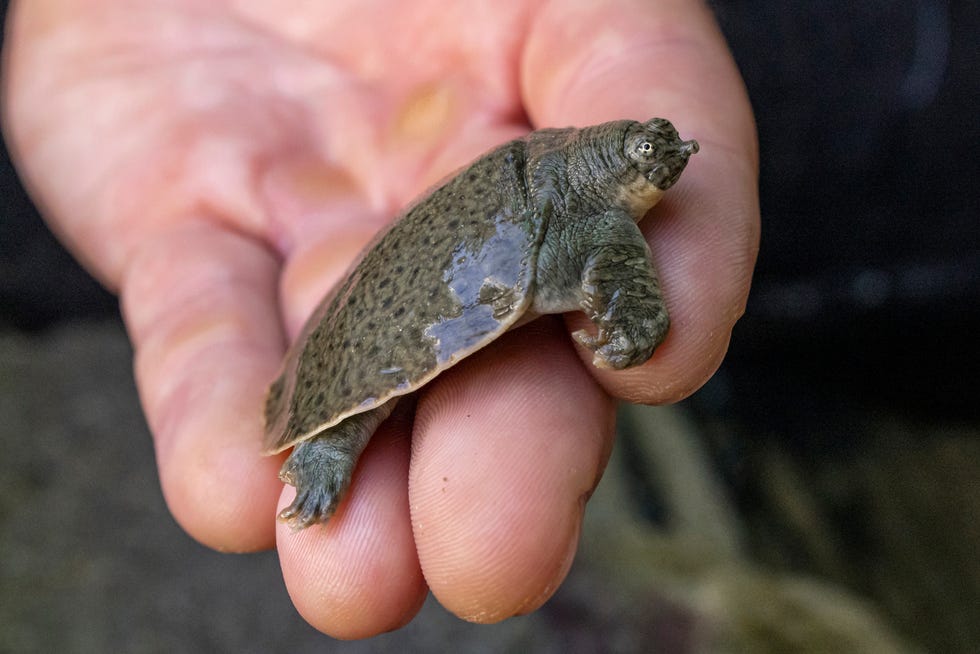The San Diego Wildlife Alliance made 41 tiny new turtle additions this summer, making it the first accredited North American organization to hatch the endangered species.
During the summer, a group of Indian narrow-headed softshell turtles (or small-headed softshell turtles) hatched, the conservation organization announced Monday.
The species is listed as endangered on the International Union for Conservation of Nature Red List of Threatened Species, partially due to the international pet trade, human harvesting for food, environmental pollution, and destruction of sand-bar habitats.
Scientists aren’t sure how many of them are still living worldw, but they’re working to figure that out.
The latest hatchlings are part of a decades-long effort to restore the species, and the turtles have lived at the zoo for more than 20 years. During that time, wildlife conservationists have kept a watchful eye on the group looking for signs of breeding.
According to the group, turtles can take nearly 10 years to reach sexual maturity, and they typically lay eggs overnight and cover them with dirt, making it hard to find a nest.
Endangered species: World’s tiniest sea turtle species discovered nesting in Louisiana for first time in 75 years
Federally protected: Wolves spotted in federally-protected Cascade Mountains amid slowest growth rate since 2016
The team found two nests with 41 eggs this summer. Some of them had already hatched inside the nests, so the team “carefully removed” the remaining eggs and put them in an artificial nest incubator. The incubator allowed the team to give the babies the best chance at life, including proper temperatures and humidity for hatchings.
The Indian narrow-headed softshell turtle is found at the bottom of deep rivers and streams in northern India, Bangladesh, and Nepal, the organization said.
They are extremely large and can be as long as 110 centimeters, according to the Institute of Biodiversity and Environmental Conservation. The largest recorded group of eggs for the species was 193, recorded in September 2008 near Etawah, India.
Scientists consider them an “indicator species” because they help determine the health of their environments.
“These turtles are higher-level predators within their native ranges,” said Kim Gray, curator of herpetology and ichthyology at the San Diego Zoo, in the release. “If they are thriving, that means the river habitats where they live are healthy and can support other species. And that includes humans, as some local communities depend on the same water source used by the turtles.”
Saleen Martin is a reporter on USA TODAY’s NOW team. She is from Norfolk, Virginia – the 757 – and loves all things horror, witches, Christmas, and food. Follow her on Twitter at @Saleen_Martin or email her at sdmartin@usatoday.com.



